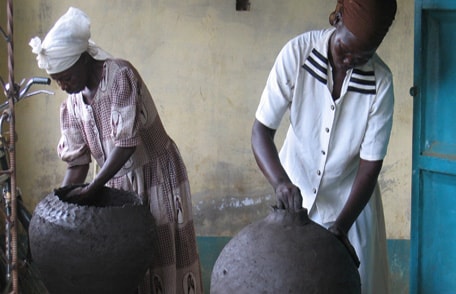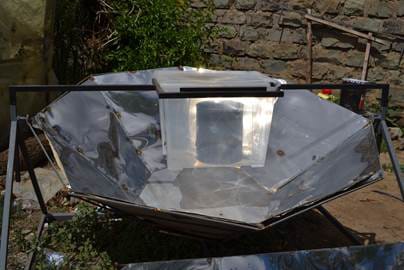NOTICE: This web page has been archived for historical purposes. Its content is no longer maintained, so information may be out of date and links may not work properly. For current Healthy Water features, please see the Newsroom, Features, & Observances page.
Learn about World Water Day 2014
Each year on March 22, World Water Day attracts international attention to the conservation and development of freshwater resources.

Water and energy are closely linked. Energy has different forms, and water is crucial to produce, transport, and use all forms of energy to some degree, and these activities have different impacts on water resources.
Water requires energy, and energy requires water. Water is required to produce nearly all forms of energy. Energy is needed at all stages of water extraction, treatment, and distribution.
Supplies are limited, and demand is increasing. Demand for freshwater and energy will continue to increase significantly over the coming decades. This increase will present big challenges and strain resources in nearly all regions, especially in developing and emerging economies.
Saving energy is saving water. Saving water is saving energy. Choices concerning the supply, distribution, price, and use of water and energy impact one another.
The "bottom billion" urgently needs access to both water and sanitation services, and electricity. Worldwide, 1.3 billion people currently live without electricity, 780 million people lack access to safe drinking water, and 2.5 billion people are without sanitation. Water and energy have crucial impacts on poverty alleviation.
Improving water and energy efficiency is important. Better understanding between the water and energy sectors of the connections and effects on each other will improve coordination in energy and water planning. Policymakers, planners, and practitioners can take steps to overcome the barriers that exist between their respective domains. Innovative and practical national policies can lead to more efficient and cost-effective water and energy services.
For more information on World Water Day and ideas on how to get involved, visit the United Nations' World Water Day website.
 Solar sanitation is an inexpensive, innovative, and effective form of human waste treatment that uses concentrated solar energy to treat waste so it can be safely discarded or potentially used for fertilizer or fuel. CDC, CDC Kenya, and the non-governmental organization Sanivation have a solar sanitation project in the Kakuma refugee camp in northern Kenya, which houses more than 100,000 refugees.
Solar sanitation is an inexpensive, innovative, and effective form of human waste treatment that uses concentrated solar energy to treat waste so it can be safely discarded or potentially used for fertilizer or fuel. CDC, CDC Kenya, and the non-governmental organization Sanivation have a solar sanitation project in the Kakuma refugee camp in northern Kenya, which houses more than 100,000 refugees.
CDC's Global Water, Sanitation, and Hygiene (WASH) Expertise
Inadequate water, sanitation, and hygiene (WASH) conditions exist in a range of settings, from temporary refugee camps to entire neighborhoods in large cities.
Since 1990, the number of persons able to access improved drinking water and sanitation resources has increased by 2 billion and 1.8 billion respectively 1. Despite these gains, hundreds of millions still lack access to these essential resources 1. Diarrheal diseases, mostly a result of unsafe water and inadequate sanitation, account for 1 in 9 child deaths worldwide. In 2010, over 800,000 children under 5 years of age died from diarrhea, making diarrhea the second leading cause of death among children under the age of 5 2.
CDC's global WASH work involves partnerships with other US government agencies, ministries of health, non-governmental organizations, UN agencies, private companies and various international agencies. Our program provides expertise and interventions aimed at saving lives and reducing illness by improving global access to healthy and safe water, adequate sanitation, and improved hygiene. The WASH program works on long-term prevention and control measures for improving health, reducing poverty, and improving socioeconomic development as well as responding to global emergencies and outbreaks of life-threatening illnesses. These improvements reduce the lethal impact of WASH-related diseases ranging from cholera to typhoid fever to hepatitis.
For more information on CDC's Global WASH Program, visit the CDC at Work section of our Global WASH website.
More Information
- World Water Day
- CDC's Global Water, Sanitation, and Hygiene Website
- CDC's Safe Water System
- CDC's Environmental Health Global Water, Sanitation, and Hygiene Website
- CDC's Global Disease Detection and Emergency Response Website
- CDC and the U.S. Global Health Initiative
- CDC's Healthy Water Website
References
- United Nations Children's Fund (UNICEF), World Health Organization. Progress on drinking water and sanitation: 2012 update. March 2012.
- Liu L, Johnson HL, Cousens S, Perin J, Scott S, Lawn JE, Rudan I, Campbell H, Cibulskis R, Li M, Mathers C, Black RE; Child Health Epidemiology Reference Group of WHO and UNICEF. Global, regional, and national causes of child mortality: an updated systematic analysis for 2010 with time trends since 2000. Lancet. 2012;379(9832):2151-61.
Get email updates
To receive email updates about this page, enter your email address:
Contact Us:
- Centers for Disease Control and Prevention
1600 Clifton Rd
Atlanta, GA 30333 - 800-CDC-INFO
(800-232-4636)
TTY: (888) 232-6348 - Contact CDC–INFO
 ShareCompartir
ShareCompartir


